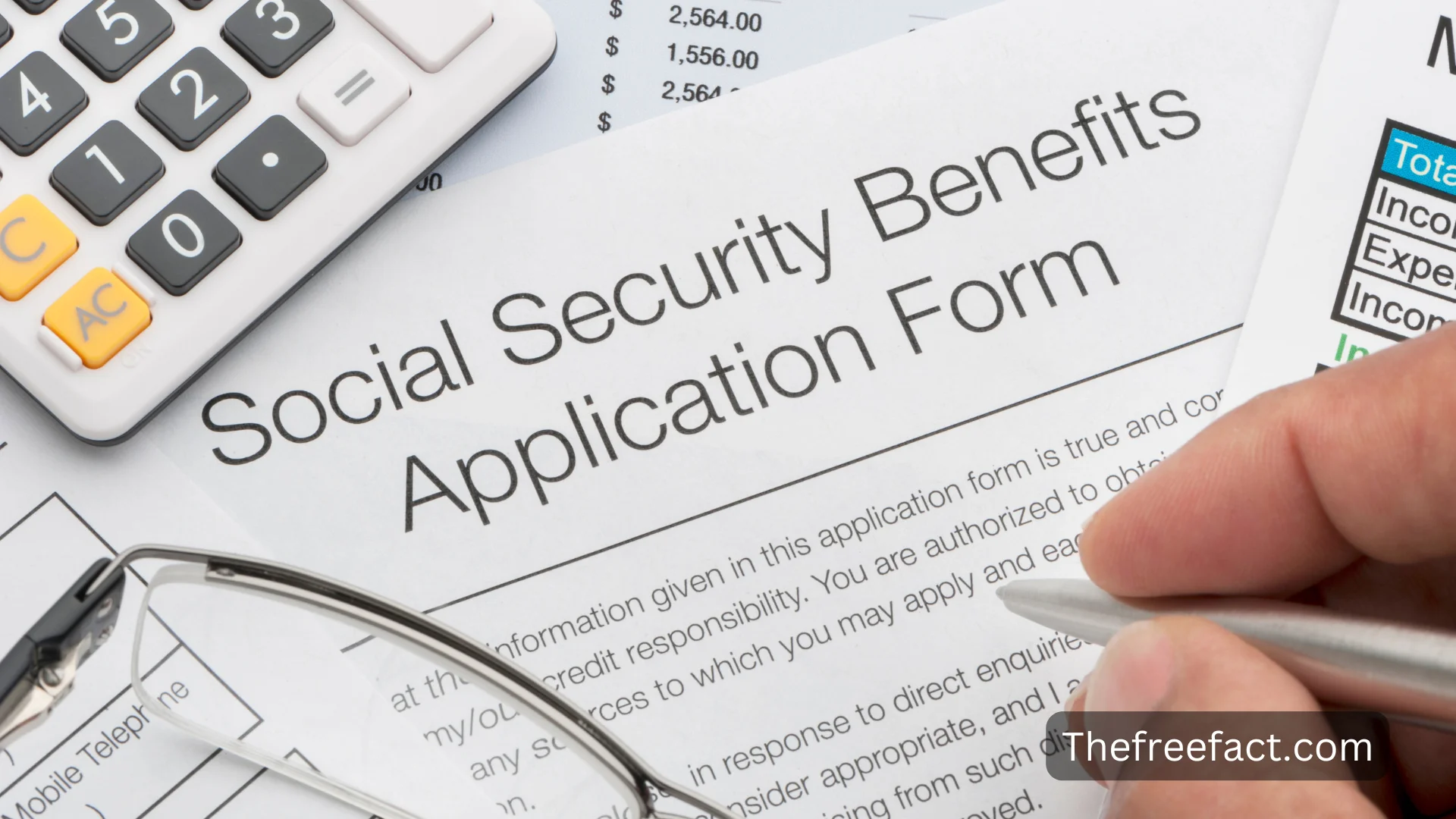How Many Months In Advance Should You Apply For Social Security Benefits?
Do you know how long you should wait to apply for your first Social Security check? Be sure to apply earlier than you might realize. If so, I’d like to receive my first check on the 1st of the month, next Wednesday. Is this the right place to talk about starting my Social Security?
It would be so easy if it were only that easy!
It doesn’t work like that…not even close.
When you apply for benefits and request them, it may take months before your first check arrives from Social Security.
When it comes to deciding when you should begin receiving Social Security benefits, it’s actually a small consideration due to administrative reasons.

You must consider a wide range of factors when deciding when to start receiving Social Security benefits. Among them are your year of birth, your age, the month you are applying, your spouse’s age (if applicable), whether you prefer discounted benefits for the remainder of your life or receiving the maximum amount of benefits.
How and when you should apply for Social Security benefits are key considerations today.
How Many Months In Advance Should You Apply For Social Security Benefits?
A Social Security retirement application can be submitted up to four months in advance, and benefits can begin as early as age 62.
The earliest you can receive Social Security benefits is at 62 years and 1 month. If you don’t wait until full retirement age, which for most people is 67 years old, the Social Security Administration will reduce your benefits.
What is the application process?
Before we get to some of the other pressing questions, let’s talk about how you apply for the benefit.
For more information about applying for Social Security, go to the SSA website. You can also call 1-800-772-1213 or 1-800-325-0778. If you prefer, you can visit your local Social Security office, though they suggest setting up an appointment in advance.
To find out if you are eligible for Social Security, make an appointment with your local Social Security office, U.S. Embassy or Consulate.
They emphasize on their website that whatever method you intend to use for applying, you should gather all the required information in advance.
According to the agency, you will be asked to provide the following information to support your application:
Information about yourself
- Birthdate
- Birthplace
- Number of Social Security
- Other Social Security numbers you may have used
- Status of citizenship
- Providing the names, Social Security numbers, and dates of birth or ages of your current and former spouses
- A list of any children under 18 who are unmarried, any children aged 18-19 who are in elementary or secondary school, and any children who are disabled before the age of 22.
- The Routing Transit Number and account number of your bank or other financial institution
- In case of any Social Security, Medicare, Supplemental Security Income claims you or anyone else has filed, let them know
- The month in which you wish to begin receiving benefits
- If you will be 65 within three months, whether you’ll enroll in Medicare Part B (Medical Insurance)
Your work information
- Provide the name and address of your current employer(s) and your previous employer(s)
- When applying for benefits between September and December, you will also have to estimate your earnings for next year.
- You will need a copy of your Social Security Statement or a record of your earnings
- Any U.S. military service you had before 1968, including the dates of beginning and ending
- Whether you were prevented from working because of illness, injury, or condition within the past 14 months. If “Yes,” they will also ask the date you were prevented from working.
- Your spouse’s or your own railroad experience
- You may be entitled to Social Security credits if you have earned them under the social security system of another country
- As a result of your employment with the Federal government or one of its states or local subdivisions, whether you are eligible for or expect to receive a pension or annuity
In the event you elect to submit this documentation online, you may have to do so, or you may be required to mail it to the SSA. The process may require an original birth certificate, proof of citizenship, military discharge paperwork, W2s, 1099s, and self-employment tax returns, among other documents.
That may sound like a lot, but it’s not that difficult.
You will be advised about any issues and guided through the process by the SSA if there are any.
Then there’s the timing issue: it takes a lot of time and effort to verify your identity, set up payments, and make sure they’re going to the right place, so they recommend you get started at least four months ahead of time.
We will now examine some of the more difficult issues you should address before you submit your benefits application.
Social Security: Is It Worth Waiting Until Full Retirement Age?
Social Security benefits at age 62 are less generous than benefits at full retirement age. For people born in 1943 to 1954, full retirement age is 66. For people born in 1960 or later, full retirement age is 67.
The 30% penalty for taking Social Security before full retirement age is permanent if you were born in 1960 or later. You receive an 8% increase in benefits every year you delay taking them past full retirement age, up until you reach the age of 70, when the increases stop.
Based on your birthday, you can calculate your full retirement age to determine how to maximize your Social Security benefits.
Sooner or later, you’ll retire
Additionally, there are key milestone issues and ages you should be aware of when applying for Social Security benefits. These include being disabled, reaching your FRA, and turning 70, as well as when you can start receiving your benefits.
Also check: Is Social Security Disability Taxable?
Having a disability
The Social Security Disability Insurance, or SSDI, is available to people between the ages of 18 and 65 who are disabled. That’s actually not true.
As a child, you may be eligible for Supplemental Security Income (SSI) until the age of 65. There are income and disability requirements for receiving SSI.

Minimum age – 62
When you turn 62, you are eligible to begin receiving Social Security benefits. You will need to wait at least one month after turning 62 to begin receiving benefits, but you should still begin the application process at least four months in advance if you decide to start benefits at that time.
You and your spouse will receive a lifetime discount for starting your benefits so far in advance of your full retirement age.
If you started your benefit at the age of 62, you would receive a discount of up to 30% of what you would receive if you waited until your FRA. If you were born in 1960 or later, you can view your discounted amount here.
FRA
If you were born between 1943 and 1954, your full retirement age is 66. You can view a table here to determine your FRA.
Those born in 1958 and later are considered 66 years and eight months old, while those born in 1960 and later are considered 67 years and eight months old.
The Social Security Administration calculates 100-percent of your benefits based on your top 35 years of earnings during the time you worked. Once you reach your FRA, you are entitled to 100-percent of your benefits.
Age 70
By deferring your benefit payouts up to 70, you could receive a total of 124-percent more than the SSA deemed you eligible for when you reached your FRA, or 8-percent per year.
This enhanced benefit would be payable for the rest of your life. The benefit amount of your spouse would be limited to 50% of your FRA benefit.
It should be noted that if your spouse was younger than their FRA at the time, they would receive a discounted benefit.
Benefits for spouses and survivors
Unless your spouse has their own Social Security benefit, they cannot collect both their own Social Security benefit and your spouse’s benefit at the same time. Non-eligible spouses cannot receive both their own Social Security benefit and your spousal benefit at the same time.
You should keep in mind that if your spouse started making payments before you (before your FRA), or if they were under their own FRA at that time, they would receive a discount.
Also check: When a husband dies does the wife get his social security disability?
Last but not least, your spouse, children, and grandkids can be entitled to survival benefits if you die.
It is possible for them to receive survivor benefits at the age of 60 (or 50 if they are disabled), but the monthly benefit amount will be reduced based on their age, up to their FRA. A surviving spouse can receive the full surviving spousal benefit amount if they delay until their own FRA.
Work continues
According to the Social Security Administration, you may be able to work while receiving benefits, however, you may have partial benefits withheld depending on your age.
There are earnings limits set by the Social Security Administration. If your earnings exceed those limits, they will withhold a percentage of the discounted amount you are entitled to.
A person with more than one year left before reaching FRA will be deducted $1.00 for every $2.00 over the limit, according to the SSA. The limit for 2024 is $22,320.
For every $3.00 over the limit you earn in the months of the year in which you reach your FRA, which for 2024 is $59,520, you will be deducted $1.00.
As soon as you reach your FRA, there is no earnings limit and Social Security won’t reduce your benefits, although the discount-percentage you selected will be permanently locked in.
There is a possibility that you owe taxes
The IRS can levy taxes on up to 85 percent of what you receive in Social Security payments. Many people mistakenly believe you don’t have to pay taxes on the benefits they receive.
Your combined income is determined by the IRS based on your adjusted gross income (AGI) plus nontaxable interest and half of your social security benefit.
- Your Social Security benefits may be subject to income tax if you file as an individual and earn $25,000 – $34,000 combined.
- The Social Security benefit you receive may be taxed to the tune of 85 percent if your combined income exceeds $34,000.
- The amount of your Social Security benefits that are subject to income tax can be up to 50% if you file joint returns and earn between $32,000 and $44,000.
- The Social Security benefits you receive are taxed up to 85 percent if you file a joint return with a combined income over $44,000
The possibility of paying taxes on the Social Security money you receive in 2024 should be considered when deciding when to apply for your benefits.
It seems there is bipartisan interest in ending taxation of Social Security as early as the 2025 tax year, so there is an active legislative proposal to do so.
The Mulligans
You can stop your Social Security benefits within 12 months of when you received approval for them if you previously applied and started receiving them early.
It is required that you withdraw your original claim in writing and repay the benefits that you received in order to do so.
Withdrawing your claim does not prevent you from reapplying at a future date and receiving benefits. You can only use this “Mulligan” once.
Social Security’s Future
The Social Security Administration (SSA) is not expected to be able to pay benefits when retirees retire, according to a Gallup survey from 2023.
In the current SSA projections, things are looking a little better. Until 2033, the Old-Age and Survivors Insurance (OASI) Trust Fund is forecast to be able to pay out 100% of benefits. Once that point is reached, 79% of scheduled benefits will be paid.
It is possible for Congress to ensure that Social Security will be able to pay full benefits by raising the payroll tax, eliminating the cap on taxable income, and raising the retirement age. A fix has precedent, too. During the Greenspan Commission’s recommendations for Social Security in 1983, they raised the retirement age and increased the tax rate. As a result of these fixes, Congress was able to address trust fund shortfalls and ensure the program’s viability.
The current benefit projections, however, should be considered by future retirees when planning for retirement.
Conclusion
If you want to start receiving your Social Security benefits, you can’t just call the Social Security Administration and request a check the following week.
Setting up those payments takes some time, and you have to provide a lot of information to get them rolling.
Obviously, there are numerous more decisions to make before you can start receiving your Social Security benefits.
The best way to determine when it is best for you and your family to begin receiving Social Security benefits is to do a full assessment before contacting the Social Security Administration.
Getting your golden years just right requires making a number of complex retirement decisions. Frankly, you’d do well to work with a team that’s experienced in helping people make these kind of decisions.







